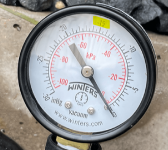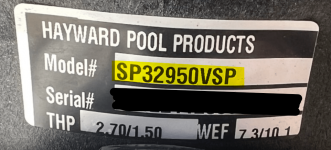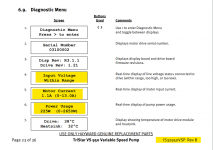The suction line at a single 2" line is too small, which might be causing cavitation.
As you can see, the flow can get to about 175 gpm at full speed and low head loss.
The suction should have been at least 3" and probably 4" depending on the total flow required.
You want to keep the water velocity below 6 ft/sec on the suction and below 8 ft/sec on the pressure side of the pump.[7]
At 138 GPM, the head loss would be 35.2 feet and the velocity would be 14.1 feet per second for 2" PVC pipe.
Once the head loss exceeds 17 feet, the pump is in danger of cavitating.
Any flow over 100 GPM in 2" suction pipe risks cavitation.
If they had used 3" PVC pipe, the head loss would be only 6.2 feet at 175 GPM.
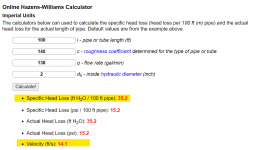


 www.engineeringtoolbox.com
www.engineeringtoolbox.com
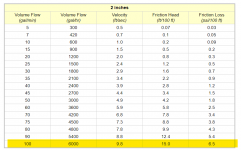
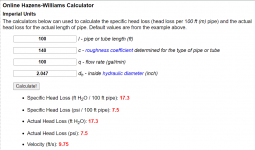
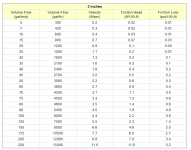

 www.engineeringtoolbox.com
www.engineeringtoolbox.com
As you can see, the flow can get to about 175 gpm at full speed and low head loss.
The suction should have been at least 3" and probably 4" depending on the total flow required.
You want to keep the water velocity below 6 ft/sec on the suction and below 8 ft/sec on the pressure side of the pump.[7]
At 138 GPM, the head loss would be 35.2 feet and the velocity would be 14.1 feet per second for 2" PVC pipe.
Once the head loss exceeds 17 feet, the pump is in danger of cavitating.
Any flow over 100 GPM in 2" suction pipe risks cavitation.
If they had used 3" PVC pipe, the head loss would be only 6.2 feet at 175 GPM.

| Pipe Size | 6 ft/sec | 8 ft/sec |
|---|---|---|
| 1.5" | 38 GPM | 51 GPM |
| 2" | 63 GPM | 84 GPM |
| 2.5 | 90 GPM | 119 GPM |
| 3.0" | 138 GPM | 184 GPM |
| 4.0" | 235 GPM | 312 GPM |

Hazen-Williams Water Flow Formula: Head Loss, Data, Charts & Calculator
Friction head loss (<i>ft<sub>H2O</sub> per 100 ft pipe</i>) in water pipes can be estimated with the empirical Hazen-Williams equation.




PVC Pipes Schedule 40 - Friction Loss vs. Water Flow
Water flow in thermoplastic PVC and CPVC pipes Schedule 40 - friction loss <i>(ft/100 ft, psi/100 ft)</i> and flow velocities at dimensions ranging 1/2 to 16 inches.
Last edited:


